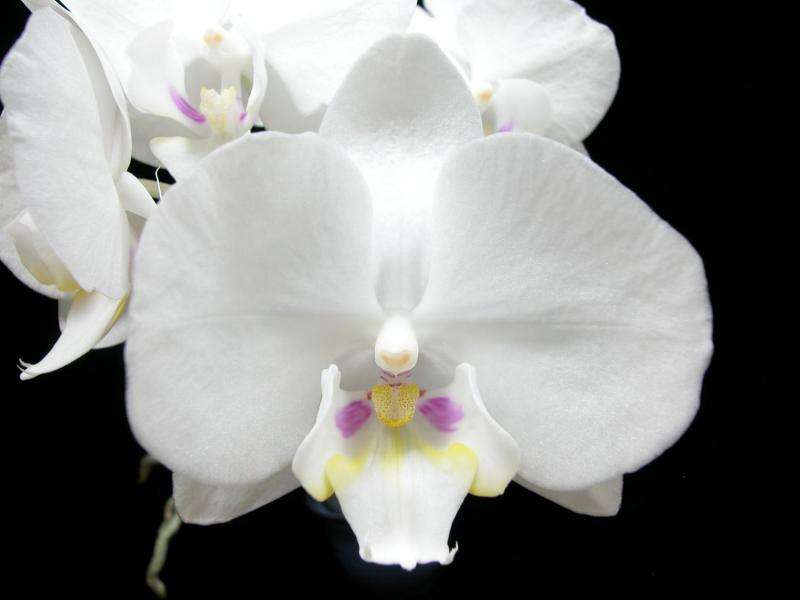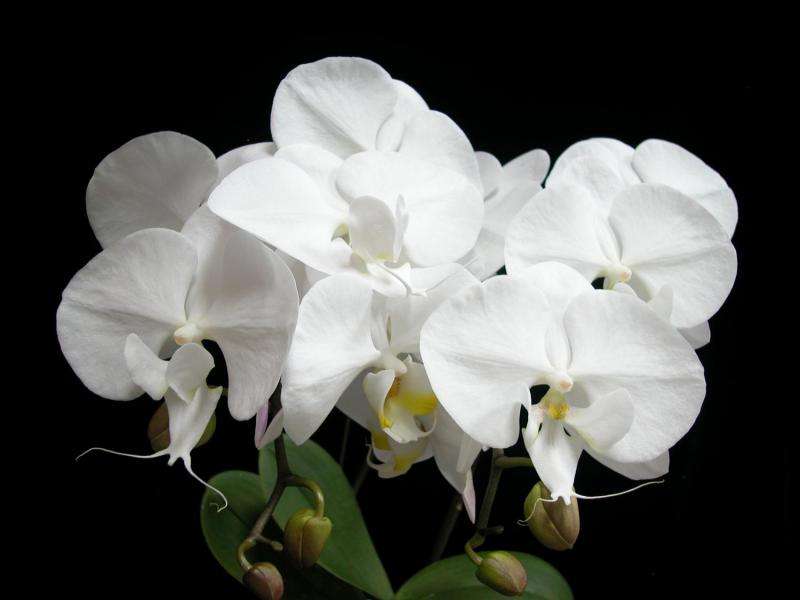April 28, 2015 report
Researchers find proteins responsible for orchid shape

(Phys.org)—A team of researchers with National Chung Hsing University in Taiwan has found the proteins responsible for determining the shape of orchid lips. In their paper published in the journal Nature Plants, the team describes how they unlocked the secret of orchid shape and by so doing were able to alter the shape of the plant on demand. Barbara Gravendeel and Anita Dirks-Mulder of the Naturalis Biodiversity Center and the University of Applied Sciences Leiden, Sylviusweg, The Netherland, have published a News & Views piece on the work done by the team in the same journal issue.
Orchids make up the largest species of the plant family, with over 26,000 recognized. They are also somewhat unique in that they have an irregularly shaped, elongated petal called a lip, which plant scientists believe has evolved to served as a landing place for pollinators—a feature that appears to have given the plant an evolutionary advantage. But the lip is not the same for all species, or sometimes even in the same species, which has caused scientists to wonder what is the controlling mechanism for it.
In this new effort, the researchers took a closer look at plant genes A,B,C,D and E, which prior research has shown are responsible in general for plant shape. Until now, no one has been able to figure out which one, or combination of the genes is responsible in particular for lip shape. Because the B class has been found to be heavily involved in petal formation in general, the researchers looked at the proteins that are expressed by that gene in orchids. They found that there were two types of protein complexes, one called the L complex (for Lip) and another called the SP complex (for sepa-petal)—both of which were made up of four proteins. They found that there was a tug-of-war between the complexes, when one exerted more influence, the plant exhibited more of that attribute. To prove their findings, they introduced a virus that was capable of knocking out one or the other of the protein complexes—in the absence of an L complex, the lip was replaced by a normal petal, whereas in the absence of an SP complex, the lip was prominent.

More information: Model for perianth formation in orchids, Nature Plants 1, Article number: 15046 (2015) DOI: 10.1038/nplants.2015.46
Abstract
Orchidaceae, the orchid family under the order Asparagales, contains more than 20,000 accepted species in approximately 880 genera. In contrast to most flowers of actinomorphic symmetry, orchid flowers typically have zygomorphic symmetry with a striking well-differentiated labellum (lip) that acts as the main pollinator attractant by employing visual, fragrance and tactile cues. Genetics models controlling patterning formation of actinomorphic flowers, such as Arabidopsis, are well known. However, the mechanisms of sepal/petal/lip determination remain obscure. Here, we demonstrate a conserved principle, called the Perianth (P) code, which involves competition between two protein complexes containing different AP3/AGL6 homologues to determine the formation of the complex perianth patterns in orchids. In the P code, the higher-order heterotetrameric SP (sepal/petal) complex (OAP3-1/OAGL6-1/OAGL6-1/OPI) specifies sepal/petal formation, whereas the L (lip) complex (OAP3-2/OAGL6-2/OAGL6-2/OPI) is exclusively required for lip formation. This model is validated by the conversion of lips into sepal/petal structures in Oncidium and Phalaenopsis orchids through the suppression of the proposed L complex activity in lips using the virus-induced gene silencing (VIGS) strategy. A comprehensive examination of four different subfamilies of Orchidaceae further validates the P code and significantly extends the current knowledge regarding the mechanism and pathways of perianth formation in orchids.
Journal information: Nature Plants
© 2015 Phys.org


















